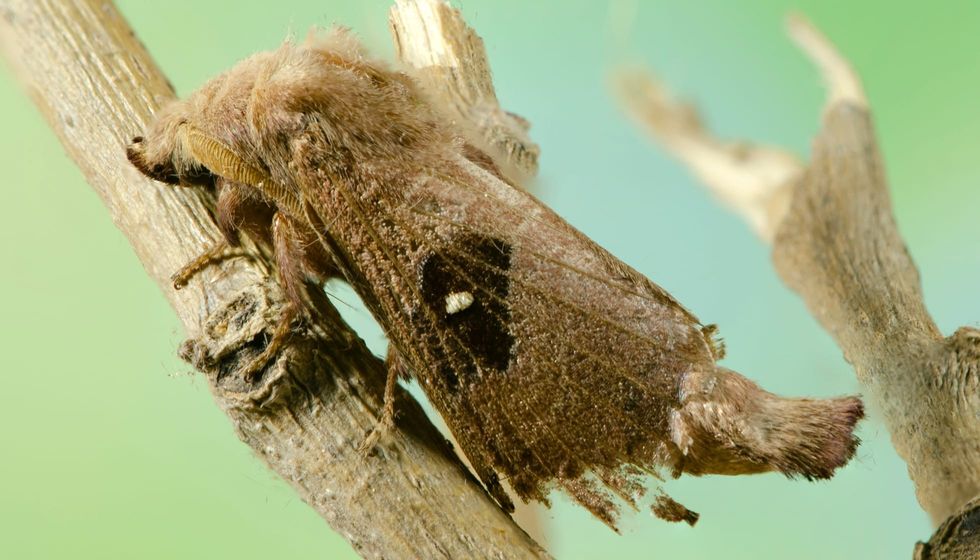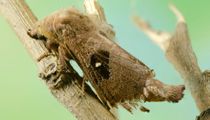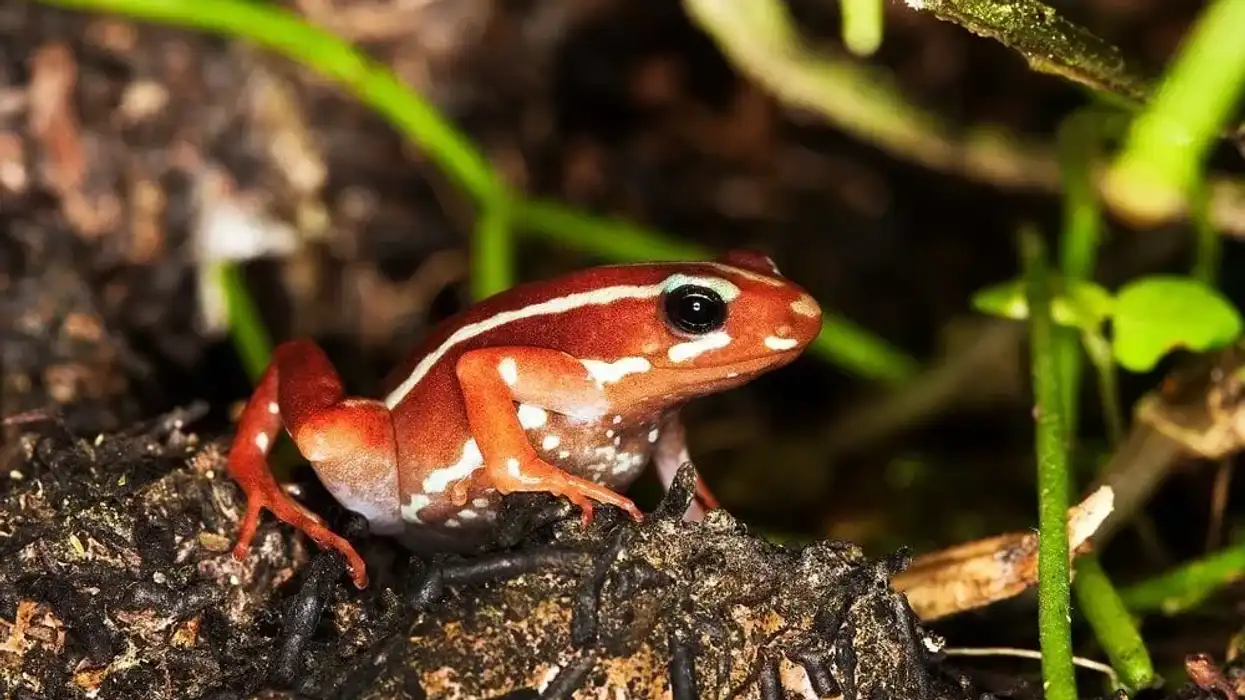The forest tent caterpillar moth is a very well-known moth. The populations of this moth stand out for its transition from furry larvae on host trees to being fully mature adults by spring, where they continue to live on trees and eat leaves in the North, soon after which they have eggs.
These eggs then develop into full-grown adults themselves, and the life cycle then continues on as such. Unlike their relatives - the eastern tent caterpillar, this north-based moth does not have a very visible silken net.
This moth prefers deciduous trees, especially in spring when the leaves of their host tree are healthy and full of nutrition for them and their larvae. Primarily found in the northern and eastern states of North America.
If you are curious about the forest tent caterpillar moth distribution, how they spend their time on a singular tree, their lifespan throughout spring, winter, summer, and other seasons, their relation with other animals like the eastern tent caterpillar, and more -do read on. Don't forget to check out giant water bug facts and ghost ant facts as well!
Forest Tent Caterpillar Moth Interesting Facts
What type of animal is a forest tent caterpillar moth?
The forest tent caterpillar (Malacosoma disstria) is a type of moth.
What class of animal does a forest tent caterpillar moth belong to?
Forest tent caterpillars belong to the class Insecta.
How many forest tent caterpillar moths are there in the world?
There are over 20,000 forest tent caterpillars (Malacosoma disstria) on the planet.
Where does a forest tent caterpillar moth live?
Forest tent caterpillar (Malacosoma disstria) species lives in the woods. The forest tent caterpillar moth range throughout areas of North America, particularly in the eastern regions.
What is a forest tent caterpillar moth's habitat?
Unlike those of kindred tent caterpillar species (such as the eastern tent caterpillar), forest tent caterpillar larvae do not create tents but instead construct a silky sheet on which they lie together when molting. Forest tent caterpillar moth habitat is usually found in deciduous hardwood trees (especially as larvae or when in egg mass).
Host trees like this prove to be perfect for their lifestyle.
The painted-lady butterfly prefers open settings like fields and grasslands and trees. However, they can also be seen in more wild open regions like suburban or agricultural and tropical swampy rainforests and tundra alpine habitats.
Who do forest tent caterpillar moths live with?
Forest tent caterpillar (Malacosoma disstria) gregarious caterpillars are migratory and graze in groups. For the majority of their larval phases, a population of about 50-200 larvae, that originate from only one egg mass, dwell together.
Caterpillars are traveling in groups to feed and overrunning as a group when at rest.
As the caterpillars grow larger, their group behavior declines, and by the fifth molt, the caterpillars are eating and resting separately. They then eventually go on to have their own egg masses after breeding, and each of the egg masses then comes out with several new individuals.
How long does a forest tent caterpillar moth live?
Adult moths reemerge 10-14 days following pupation, breed, and lay egg masses upon host trees. Although adult moths don't eat and forest tent caterpillar moths live only for 2-10 days, they can cause significant problems when congregating in large numbers around evening lighting. The average life expectancy of a monarch butterfly is two to six weeks.
How do they reproduce?
Males are the first adults to come from the pupa, mostly in early spring. They concentrate on the highest portion of the tree throughout their early stages.
Later, they gather on the base and lower branches of the tree. In most cases, larvae go through five phases. When large populations cause complete plant defoliation, older caterpillars often wander around looking for food or an appropriate site for spinning cocoons.
Some people refer to cocoons as armyworms because of their proclivity to move in a single file. The caterpillars build yellow silk cocoons inside a folded leaf, wood crack, or other secluded location five to six weeks after the eggs hatch.
The larvae molt into pupae in such cocoons. The overwintering phase is the egg mass, including its encased lethargic caterpillars. Early in the early spring, the eggs hatch and the very first lively larval instars emerge as the host tree's buds develop.
Buff-brown caterpillars appear 10 days later but only survive for a few days when they pair and deposit eggs. The eggs are placed in masses of 100-350 around higher tiny twigs. The eggs are bonded together and covered in a foamy secretion which hardens to a lustrous dark brown.
What is their conservation status?
The conservation status of the forest tent caterpillar is of Least Concern, as declared by IUCN Red List.
Forest Tent Caterpillar Moth Fun Facts
What do forest tent caterpillar moths look like?

They are dark brown, black, or gray adult caterpillars with large blue longitudinal bars and narrow yellow stripes going down either side. The abdominal segment has a white patch on the back that gets wider as it gets closer to the head.
The sides are partly obscured in lengthy setae that look like fur. After pupation, the adult moth appears yellow to tan with a dense, short, hairy body.
A distinctive solid white line runs down the back of the eastern tent caterpillar, whereas the forest tent caterpillars have a sequence of keyhole-shaped dots.
How cute are they?
Well, not everyone might enjoy looking at these insects. They are very furry and hairy and do not often appeal to most people.
However, they are of great interest to scientists and enthusiasts alike. Within this community of researchers and those with an interest in these types of insects, there is definitely much appeal for the forest tent moth.
They are considered furry and attractive, their life cycle (such as the egg masses) is of great interest to them. Therefore, they are definitely considered cute and attractive, though this sentiment remains only within a niche community that takes interest in these creatures.
How do they communicate?
Caterpillars communicate with one another in various ways, and they use various portions of their bodies to make vibrational sounds. As a result, they make distinct noises, all of which are linked to feeding or silk production.
For example, they make various noises by scratching their mouthparts on leaves, wiggling their bodies, or sliding their anal organs across a leaf's surface.
How big is a forest tent caterpillar moth?
A full-grown forest tent caterpillar moth size is around 1.5 in (3.81 cm). On the other hand, the length of the red-admiral butterfly is about 1.75 in (4.4 cm). Therefore, the tent caterpillars are smaller in size than the red-admiral butterfly.
How fast can forest tent caterpillar moths move?
Whenever we talk about speed, forest tent caterpillar moths will be at a drawback. They are easy targets because of their slow locomotion. However, a caterpillar can reach speeds of about 1 mph (1.6 kph). Even when they become adult moths, their speed continues to be slow because of their heavy size and small stature.
How much does a forest tent caterpillar moth weigh?
The weight of forest tent caterpillars moth is unexplored.
What are the male and female names of the species?
Males and females of forest tent caterpillars don't have any particular name.
What would you call a baby forest tent caterpillar moth?
There is no distinct name for baby forest tent caterpillars.
What do they eat?
Hardwood leaves, including aspen, basswood, birch, oaks, and ash, are preferred food in forest tent caterpillar moth diet. Balsam fir, pines, spruces, and red maples are reported to be inedible to forest tent caterpillars. Adults do not eat and have siphoning mouthparts.
Are they harmful?
The forest tent caterpillar moth can do a lot of damage since it eats many shoots and leaves. Repeated defoliation weakens trees. Defoliation makes trees more sensitive to various pressures such as dehydration or insect infestation.
Trees normally recover quickly from defoliation and restarting photosynthesis within a month. Extensive defoliation for two or three years in succession, on the other hand, may result in retardation and dieback. Viceroy butterflies are said to look like toxic monarch butterflies.
Would they make a good pet?
These forest tent caterpillars moth native to North America are not a good choice to keep in captivity.
Did you know...
Bacillus thuringiensis is a type of soil-dwelling bacteria. It produces proteins that are poisonous to some bugs but not to someone when consumed. Humans are not poisoned by proteins because, like all animals, we are unable to activate them. Bacillus thuringiensis is typically used as a pesticide for insect larvae.
Are forest tent caterpillars poisonous?
Although the caterpillars individually are mostly harmless to humans (they do not sting or bite), though some people may experience an allergic reaction when handling them. As a result, forest tent caterpillar numbers reach outbreak sizes on a regular or irregular basis.
What kind of moth does a forest tent caterpillar turn into?
One group of tent caterpillar moths whose larvae spin massive, tent-shaped communitarian webs in trees, are frequently brightly colored and therefore can defoliate forest, fruit, and decorative trees.
Here at Kidadl, we have carefully created lots of interesting family-friendly animal facts for everyone to discover! Learn more about some other arthropods from our stick bug facts and Christmas beetle facts pages.
You can even occupy yourself at home by coloring in one of our free printable bug coloring pages.










